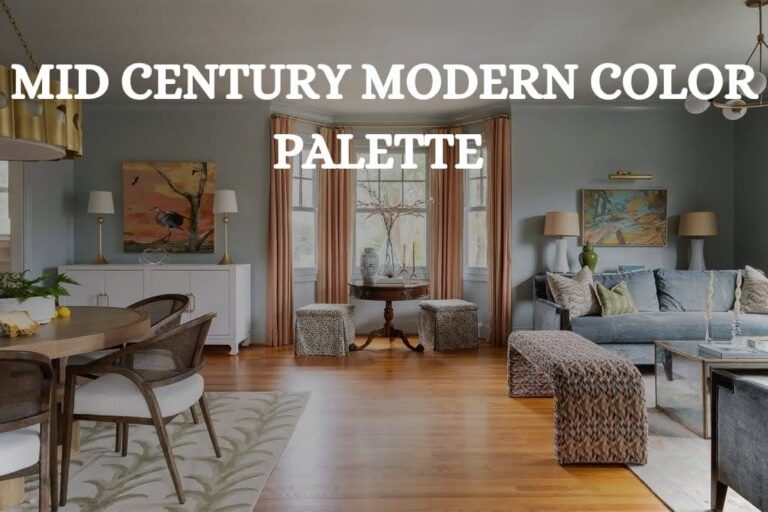In this blog, I’ll dive into the timeless appeal of the Mid-Century Modern color palette and show you how to effortlessly incorporate its bold, retro shades into your home.
Struggling with how to blend vibrant hues with calming neutrals, or worried about making it feel dated? Don’t worry—I’ve got you covered. From creating a harmonious vibe to choosing the right accents, I’ll answer your burning questions and help you bring this iconic style to life in a way that feels fresh and modern.
Let’s Dive in.
10 Popular Midcentury Modern Color Palette
If you’re ready to infuse your space with a Mid-Century Modern vibe, these colors are a perfect starting point. Let me walk you through each one and how it can transform your home.
1. Retro Revival
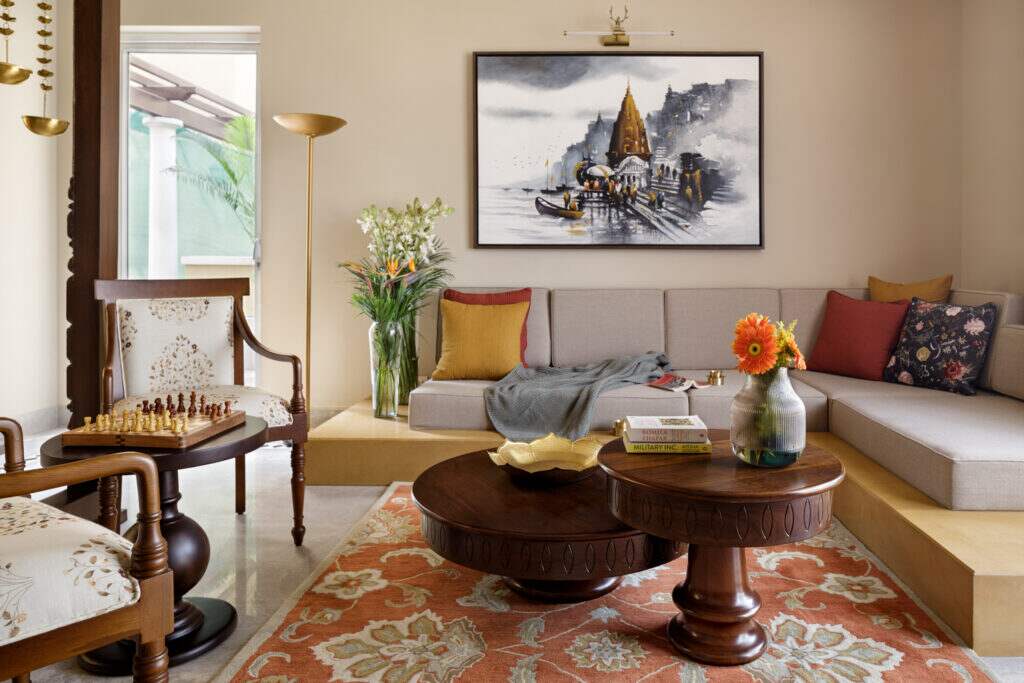
Mustard Yellow – #D4A017
Olive Green – #6B8E23
Burnt Orange – #CC5500
Walnut Brown – #5D3A1A
Cream – #FAF3DD
If you love the nostalgic charm of mid-century design, the Retro Revival palette is the perfect way to bring it into your home.
This color scheme blends bold, statement hues with earthy, grounding tones, creating a space that feels both timeless and inviting.
Start with a rich, golden accent color on a statement wall, kitchen cabinets, or a vintage-inspired sofa to instantly set the retro mood.
Balance it with deep, natural greens in upholstery, decor, or even kitchen cabinetry to complement warm wood tones.
Adding a touch of burnt, earthy hues through rugs, throw pillows, or curtains enhances the cozy, nostalgic feel.
2. Atomic Age
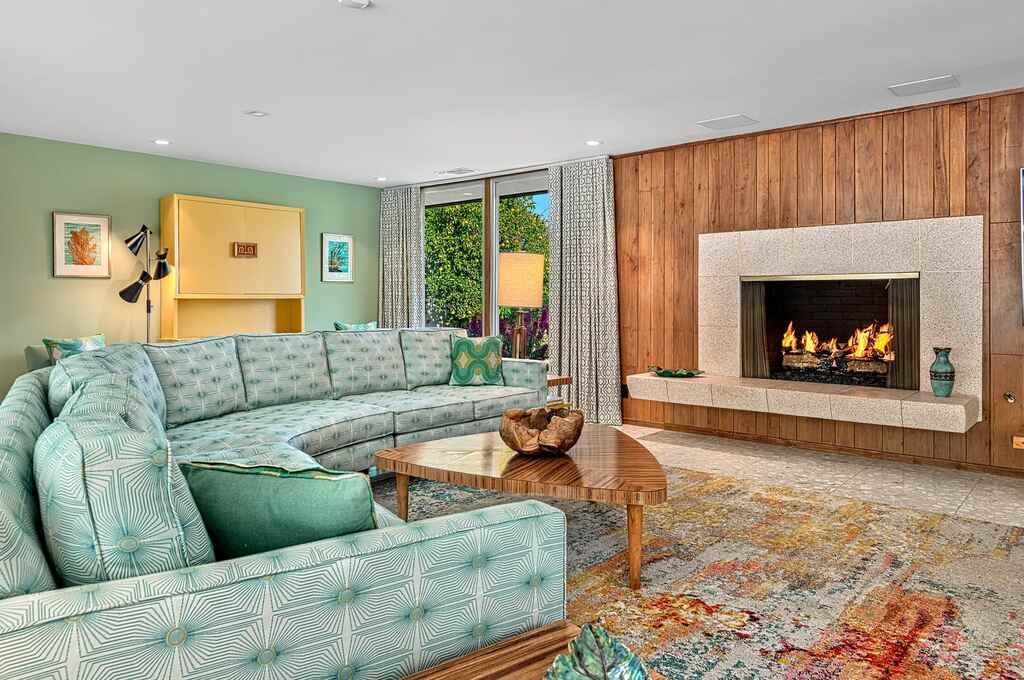
Teal Blue – #008080
Chartreuse – #DFFF00
Coral Red – #E63946
Warm Gray – #A8A39F
Soft White – #F5F5F1
The Atomic Age color palette is all about embracing the futuristic optimism of the 1950s and early ’60s, blending sleek, modern tones with playful, space-age hues.
This palette features a mix of bold and muted colors that create a dynamic yet balanced look.
Start with a striking teal or aqua as your main color—perfect for walls, furniture, or even a retro-style backsplash.
Pair it with a pop of chartreuse or soft yellow to add that signature mid-century energy, whether through accent chairs, throw pillows, or patterned curtains.
A warm coral red brings vibrancy and contrast, making it a great choice for statement furniture or decor pieces.
3. Palm Springs Sunset
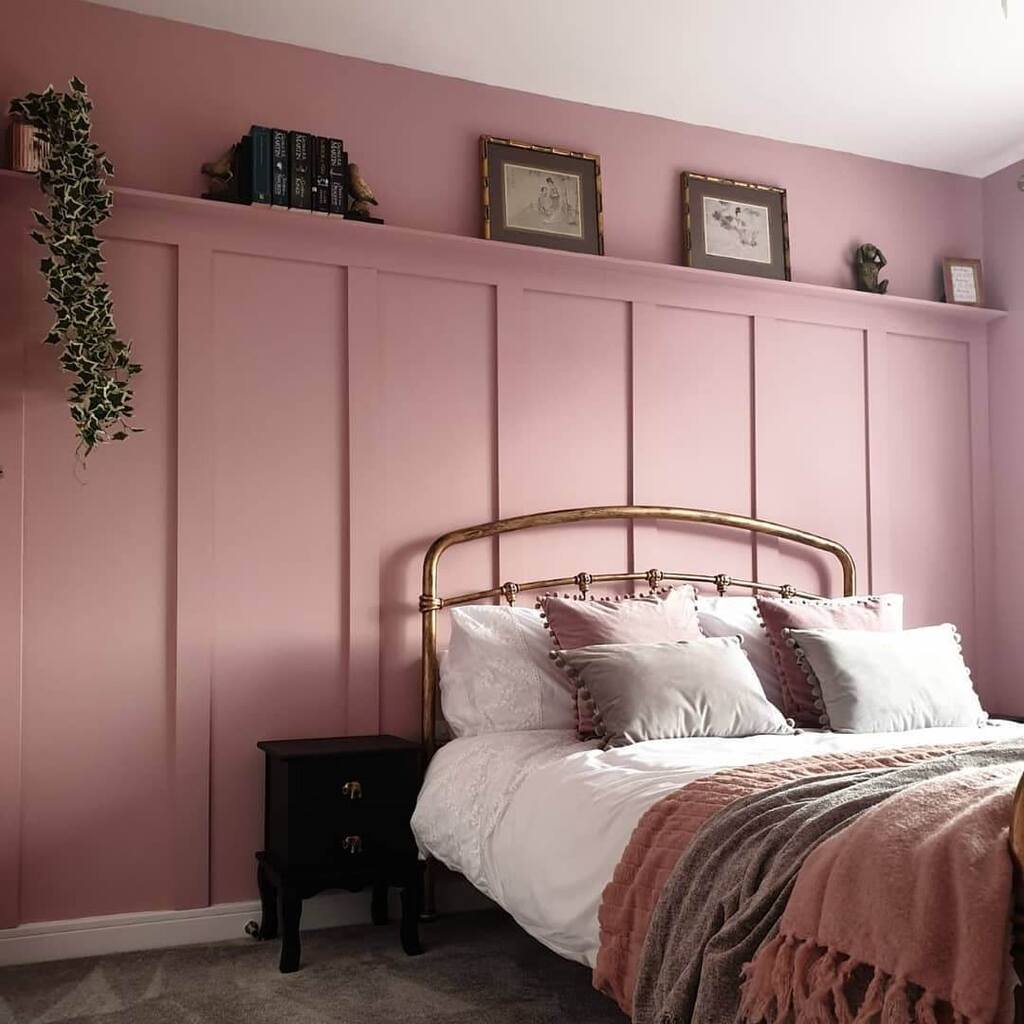
Terracotta – #E2725B
Dusty Rose – #D4A5A5
Sage Green – #9CAF88
Goldenrod – #DAA520
Sand Beige – #E3C6A8
The Palm Springs Sunset color palette captures the warm, dreamy hues of a desert evening, blending earthy tones with soft, sun-faded pastels for a laid-back yet sophisticated mid-century look.
Start with a rich terracotta or clay-inspired shade to bring warmth and depth to your space, whether on walls, furniture, or statement decor.
Pair it with dusty rose or soft peach for a touch of vintage elegance—perfect for upholstery, throw pillows, or accent pieces.
A muted sage green balances the warmth, grounding the palette with a refreshing, nature-inspired feel, ideal for cabinetry, rugs, or even tilework.
Golden, sunlit tones add a cheerful glow, making them great for accessories, light fixtures, or textured fabrics.
4. Eames Inspired
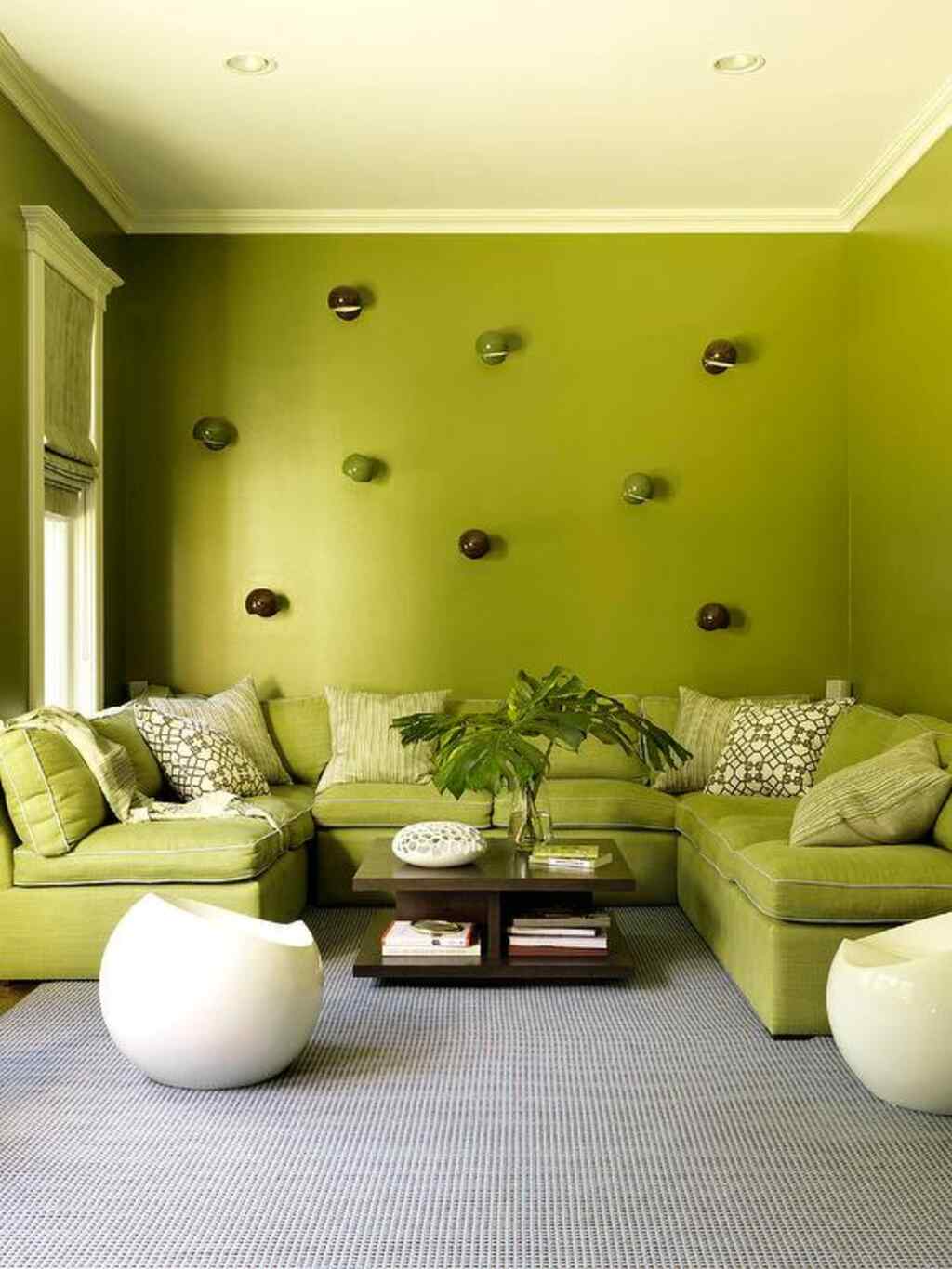
Peacock Blue – #005F6A
Persimmon – #E1523D
Avocado Green – #568203
Mahogany – #C04000
Off-White – #F8F1E9
The Eames Inspired color palette is a tribute to the bold yet balanced hues found in classic mid-century modern design.
Rooted in the aesthetic of Charles and Ray Eames, this palette combines rich, sophisticated tones with playful, energetic accents.
Start with a deep, peacock blue as a statement color—ideal for walls, cabinetry, or even a standout sofa.
Pair it with a warm persimmon or rusty orange to add a vibrant contrast, perfect for accent chairs, rugs, or artwork.
Avocado green brings in a classic 1950s-60s touch, working beautifully in upholstery, kitchen accents, or decorative accessories.
5. Vintage Mod
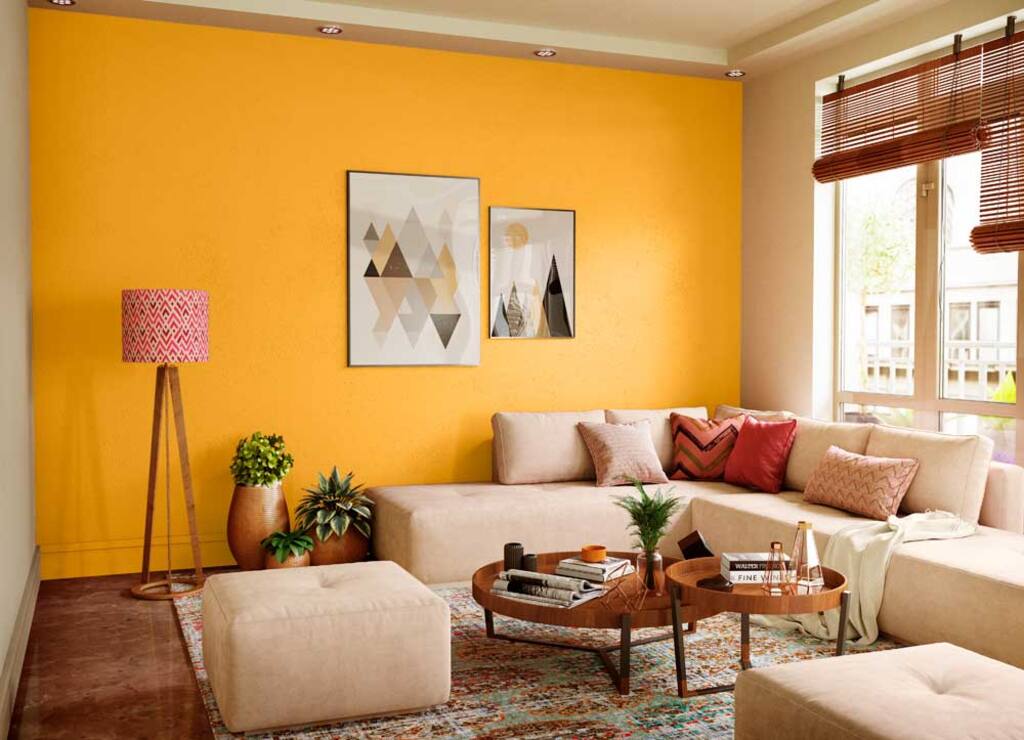
Turquoise – #40E0D0
Pumpkin Orange – #FF7518
Espresso Brown – #3E2723
Buttermilk – #FCEBB6
Deep Mustard – #B8860B
The Vintage Mod color palette channels the sleek, bold, and slightly playful aesthetic of the 1960s, where retro charm meets modern sophistication.
This palette blends striking contrasts with muted, timeless tones to create a space that feels both nostalgic and fresh.
Start with a deep, moody teal or muted olive green as a foundation—perfect for walls, cabinetry, or statement furniture.
Add in a pop of mustard yellow or burnt orange for a burst of warmth, ideal for accent chairs, textiles, or decor pieces.
A classic black-and-white combination enhances the mod aesthetic, whether in geometric patterns, flooring, or minimalist accessories.
6. Muted Modernism
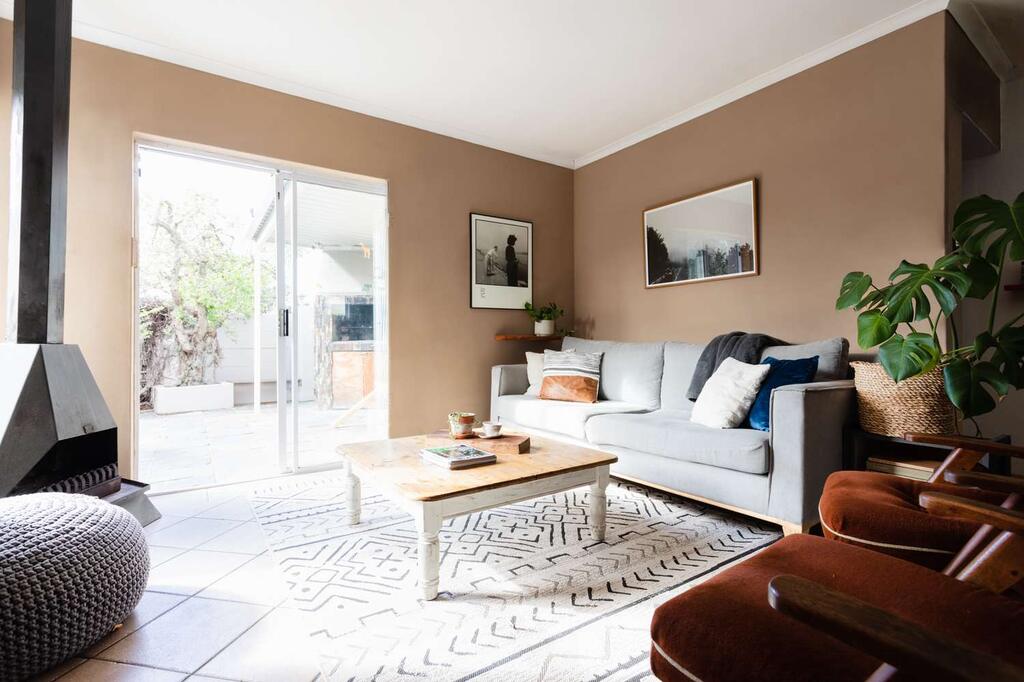
Moss Green – #8A9A5B
Clay Red – #C1440E
Warm Taupe – #A58D7F
Desert Sand – #EDC9AF
Pale Yellow – #FAE588
The Muted Modernism color palette is a refined take on mid-century design, blending soft, understated tones with sleek, contemporary influences.
This palette focuses on subtle sophistication, making it perfect for a modern home that embraces mid-century charm without overpowering the space.
Start with a warm greige or soft taupe as your foundation, ideal for walls, cabinetry, or larger furniture pieces.
Pair it with a dusty blue or muted sage green to introduce a calming, nature-inspired element in upholstery, decor, or accent walls.
A touch of deep charcoal or espresso brown adds depth and contrast, working beautifully in wood furniture, shelving, or trim details.
7. Classic 50s Diner
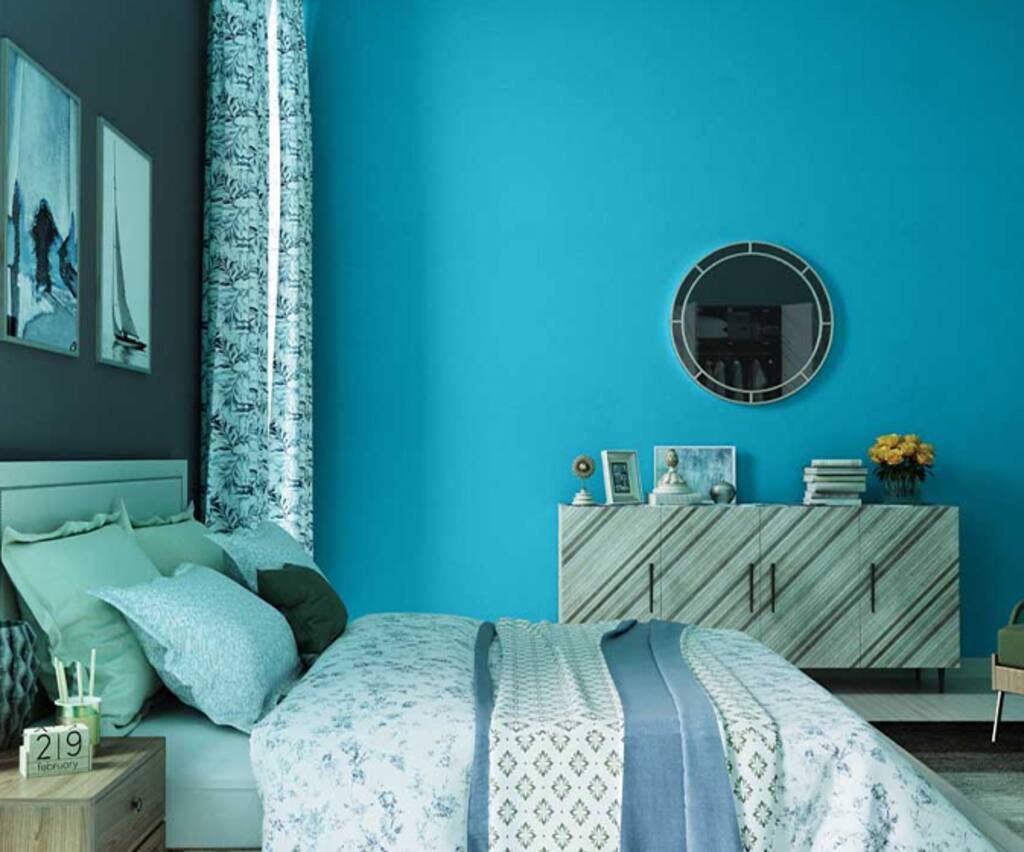
Cherry Red – #C41E3A
Aqua Blue – #00FFFF
Black Licorice – #1A1A1A
Vanilla Cream – #F3E5AB
Chrome Gray – #B4B4B4
The Classic 50s Diner color palette brings the cheerful, nostalgic vibe of mid-century diners into your home, combining bold, eye-catching tones with sleek, retro details.
Start with a vibrant cherry red to add energy and warmth—perfect for accent walls, bar stools, or statement furniture.
Pair it with soft aqua or mint green for a playful, vintage touch—ideal for cabinetry, tiles, or cushions.
Black and white make up the perfect contrast, giving your space that iconic diner feel with their timeless elegance.
8. Scandinavian Retro
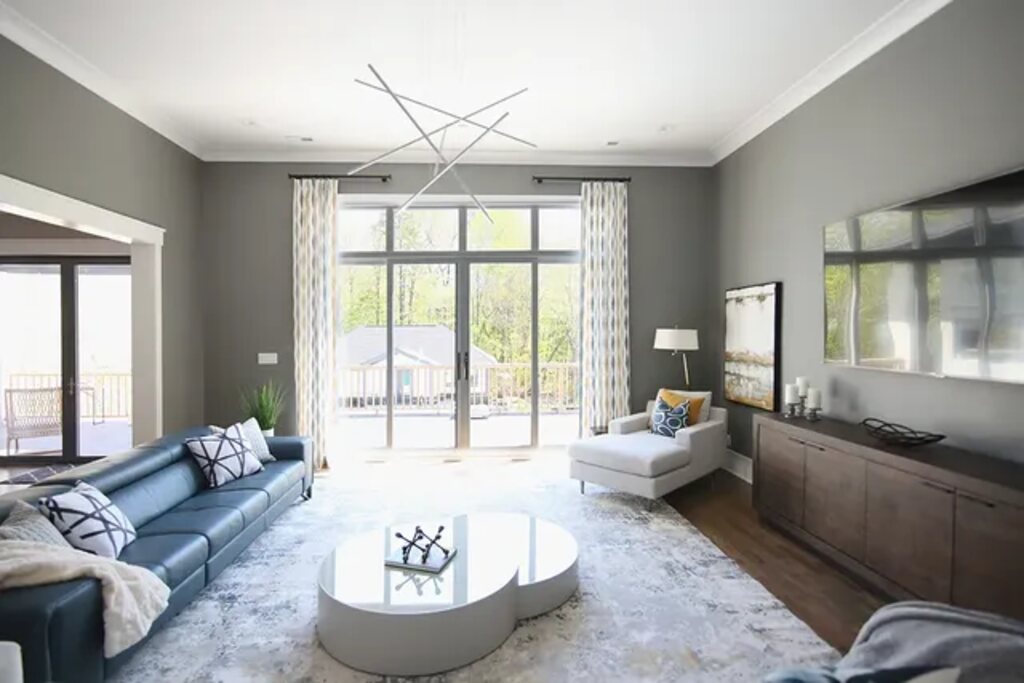
Warm Ochre – #CC7722
Fog Gray – #D6D6D6
Deep Forest Green – #013220
Dusty Blue – #7BAFD4
Pale Blush – #F4C2C2
The Scandinavian Retro color palette combines the clean, minimalist aesthetics of Scandinavian design with the bold, playful tones of mid-century modern style.
This palette strikes a balance between simplicity and warmth, making it perfect for creating a cozy, yet stylish space.
Start with a soft, light gray, or off-white as your neutral base—ideal for walls, ceilings, or larger furniture pieces, providing a clean, airy backdrop.
Pair this with mustard yellow or burnt orange for a retro pop of color that adds warmth and vibrancy without overwhelming the space.
A muted teal or soft green brings a calming, nature-inspired element, perfect for accents like throw pillows, rugs, or small pieces of furniture.
9. Bauhaus Bold
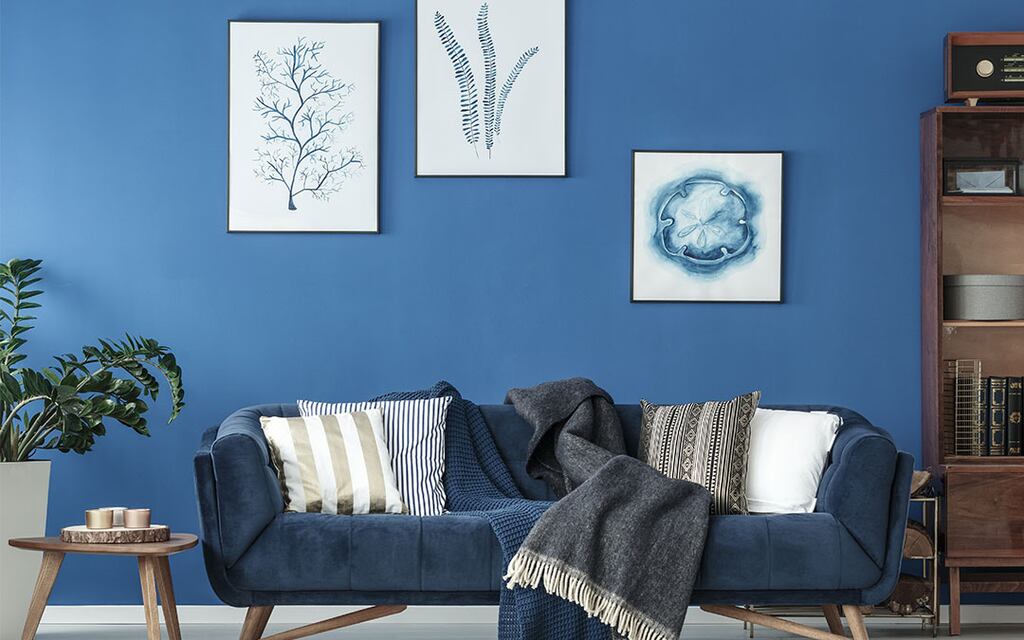
Primary Red – #D50000
Cobalt Blue – #0047AB
Sunflower Yellow – #FFD700
Charcoal Gray – #4A4A4A
Paper White – #FAFAFA
The Bauhaus Bold color palette is inspired by the iconic design movement that emphasizes clean lines, functional shapes, and primary colors, all infused with a modern twist.
This palette brings a striking contrast of bold, vibrant hues paired with neutral tones, creating a dynamic yet balanced atmosphere.
Start with primary red, yellow, and blue as your foundation—these colors are not just visually stimulating, but also capture the essence of Bauhaus design.
Use them as accent colors on walls, furniture, or decor pieces to add a punch of energy and contrast.
Pair these bold tones with a crisp black and white combo, which offers a timeless, grounding balance to the vibrant hues.
10. Cozy Mid-Mod
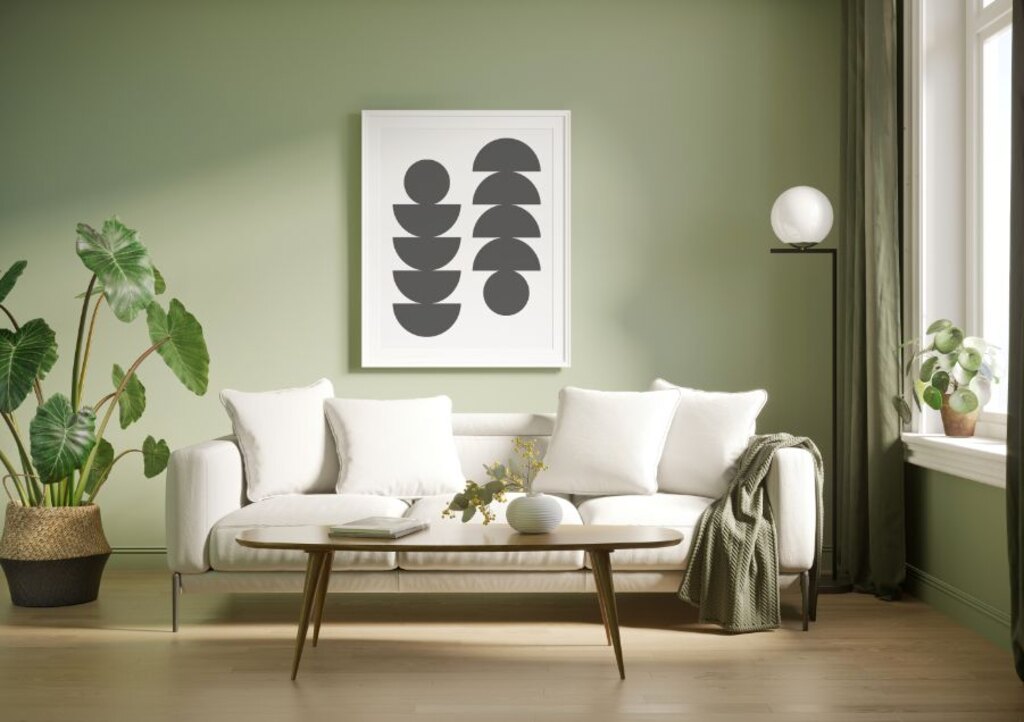
Cinnamon Brown – #9E582D
Dusty Teal – #5F9E8F
Warm Caramel – #C68E17
Soft Olive – #6B8E23
Faded Peach – #FFCBA4
The Cozy MidMod color palette blends the sleek sophistication of mid-century modern design with the warmth and comfort of a cozy, inviting home.
This palette is perfect for creating a space that feels both stylish and lived-in, with a mix of earthy, warm tones and subtle pops of color.
Start with a soft, warm beige or light taupe as your base—ideal for walls, larger furniture pieces, or cabinetry, offering a neutral backdrop that creates an inviting atmosphere.
Pair it with a rich, muted mustard yellow or terracotta to add a cozy, retro touch, perfect for accent walls, throw pillows, or textiles.
A deep, calming green or soft olive brings in an earthy vibe, grounding the space while adding a touch of nature-inspired tranquility.
Conclusion
By now, you should have a great idea of how these colors work in a Mid-Century Modern home. Each of them brings its unique energy, whether you’re aiming for a bold statement or a more subtle elegance. So, what do you think? Ready to transform your space? These color palettes are your perfect starting point. Happy decorating!
FAQs
What are the core colors of a mid-century modern color palette?
Mid-century modern palettes are based on bold primary colors (reds, blues, yellows), neutral foundations (whites, grays, blacks), and earthy tones (olive green, mustard yellow, burnt orange). These create a balance of vibrancy and sophistication.
Can I mix mid-century modern colors with other design styles?
Absolutely! Mid-century modern colors blend beautifully with styles like bohemian, industrial, or contemporary. Experiment with complementary textures and materials to create a unique and personalized space.
How do I balance bold and neutral hues in a mid-century modern space?
The key is moderation! Use bold colors like red or blue as accents, against neutral backgrounds such as white or gray, to keep the space vibrant without overwhelming it.
What effect do mid-century modern colors have on mood?
Colors like reds and oranges energize and promote conversation, while cool blues and greens bring tranquility. Earthy tones create warmth and comfort, perfect for cozy, inviting spaces.
How can I adapt mid-century modern colors for today’s homes?
For a modern twist, consider more muted or desaturated versions of classic mid-century hues. Mix them with contemporary neutrals or unexpected color combinations for a refreshed, timeless look.
Are geometric patterns important in mid-century modern design?Yes! Geometric shapes and abstract patterns are essential for adding visual interest and depth. Use them in textiles, artwork, or wallpaper to reinforce the style’s graphic nature.

